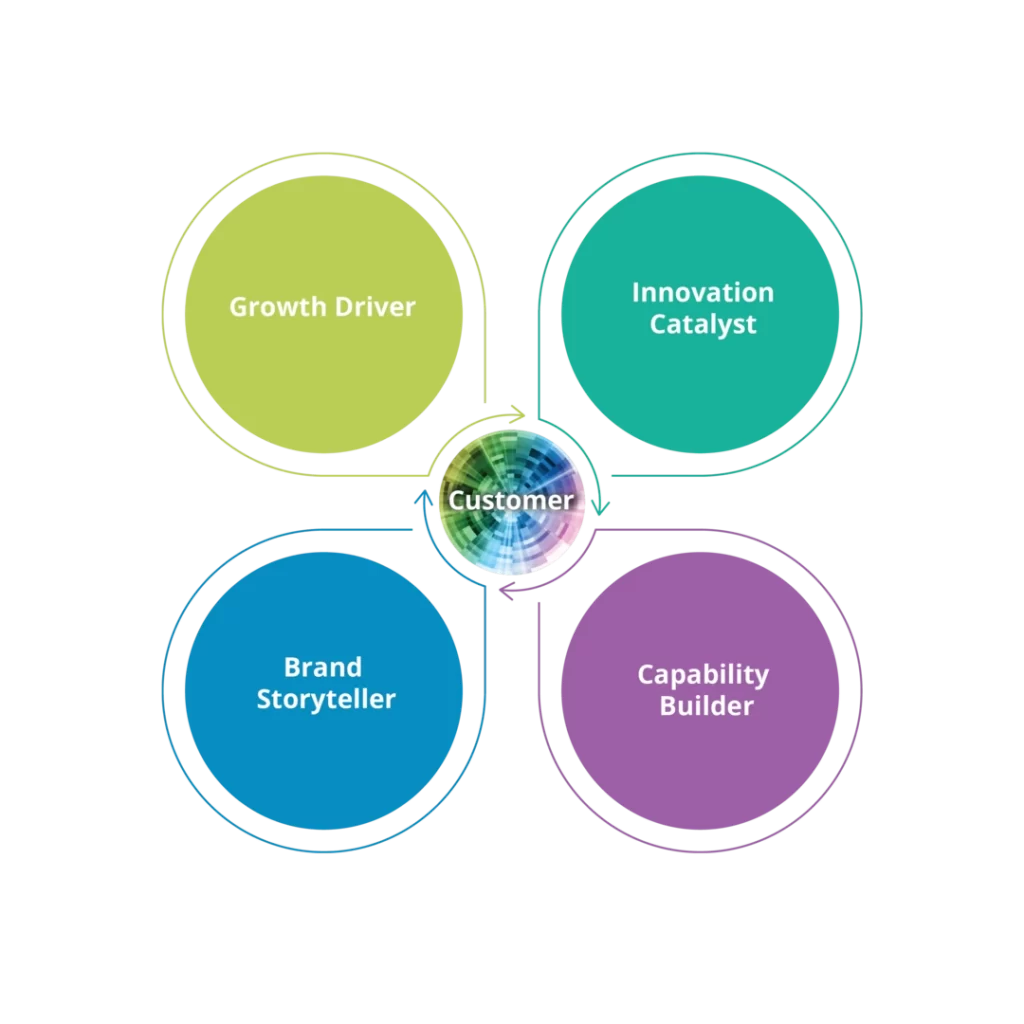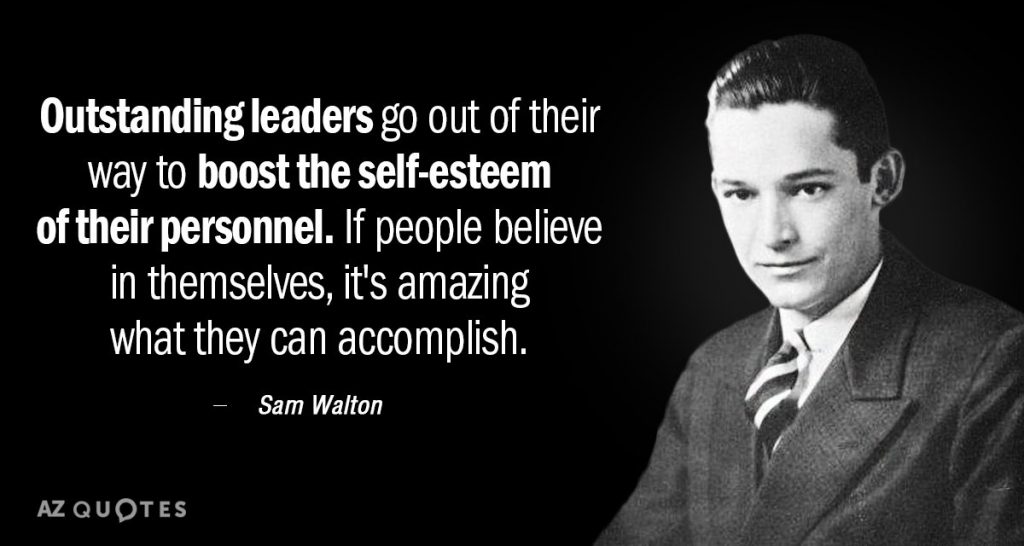A Day in the Life of a Chief Marketing Officer
Do you love marketing and communications and want to make a career? Whether you've just gotten your first marketing job after graduating from college or are working your way up the corporate ladder, your goal is to one day become a company's chief marketing officer (CMO). But, of course, becoming a CMO isn't for everyone. While you may love marketing, you might not want the pressure of becoming a c-suite executive, but you won't know it until you understand precisely what a CMO does. In this article, we'll discuss what CMOs do all day to help you determine whether it's a career path worth pursuing.
Table of Contents
What is a Chief Marketing Officer?
A chief marketing officer oversees, plans, and develops an organisation's critical marketing and advertising strategies and initiatives. They play an essential role in the company's growth, and their responsibilities range from building creative marketing strategies to reporting on goals and managing employees. CMOs report directly to the CEO with the prime responsibility of helping the company increase sales through successful marketing techniques.
CMOs use market research, help price products and services and strategies key marketing initiatives while overseeing the marketing department to measure success. Combining digital marketing, traditional marketing, advertising, and public relations, the CMO generates brand awareness while hoping to increase sales.
CMOs have a bachelor's degree or higher in marketing or a related field and at least five years in a leadership role, depending on the company. Additionally, most CMOs have at least ten years of experience in marketing and business development before being brought on as acting CMO for a new company.
Many CMOs start their career in entry-level marketing positions similar to the employees they oversee. As they step into the corporate world, they begin learning about marketing tactics, such as eCommerce, content, social media, email, and more. Because becoming a senior marketing professional requires a person to have a variety of marketing and business knowledge, CMOs spend the beginning of their career diving into different avenues and applying different analytical and strategic techniques that contribute to overall business development.
What Are the Duties of a CMO?

There are many tasks within marketing departments. A CMO must have a wide variety of knowledge and devotion to ensure that all of these marketing tasks are taken care of and running smoothly and efficiently! While the CMO probably works with a large team and directs others in their marketing efforts, there are many duties that they must take care of.
A CMO oversees the entire marketing department and is responsible for managing project managers and account executives while helping to improve critical initiatives and reporting on successes and failures to the CEO.
Ultimately, the goal of the CMO is to drive revenue and reach company-wide goals while helping marketing directors and managers develop winning strategies. Furthermore, because they oversee the entire marketing department, they must create plans and anticipate needs to ensure that a team has all the resources needed to get their job done.
Marketing leaders manage all aspects of marketing activities, so they must understand brand development, sales, product, and customer service. Marketing executives and leaders will spend much time meeting with other executives to help with product and service pricing, product development, and market research.
CMOs wear many hats, and their roles differ depending on the company. However, typical duties of CMOs include the following:
Strategising
CMOs aren't the ones who run the marketing campaigns, but they manage them and strategise about finding new ways to reach customers. Looking at past data, CMOs analyse different marketing techniques to find the one that performs the best and build upon them to improve sales.
A crucial part of strategising is meeting with the CEOs and company executives regularly to learn about goals and objectives and then coming up with ideas to achieve them based on past performance.
Because CMOs have a history and variety of marketing knowledge, they can analyse metrics and develop new strategies that will overcome blocks and guide a company toward success.
There are also many areas in which CMOs have to strategise with their teams and different marketing departments. Not only is their focus on developing and enhancing the customer experience, but they also aim to leverage technological advancements and public relations tactics to develop clear and concise messaging for their brand.
A chief marketing officer can frequently be seen holding meetings with different teams to strategise and work through any struggles by developing a plan of action and supporting their team. Not only does the CMO use marketing strategies, but they also use communication and interpersonal strategies to grow in and outside the workplace.
Another aspect of strategising that CMOs have to include in their day-to-day workflow is prioritisation. Prioritising is essential for the marketing leader because this ensures that teams are working intentionally and aligned with a company's goals. The CMO will prioritise what you should take care of marketing efforts first, which can be put on the back burner. Because the CMO will have prior knowledge of marketing projects, they will have clarity on which areas a team should focus on. From here, the CMO will communicate their priorities to their team so everyone can work efficiently on the same page.
Leadership

Chief marketing officers oversee the entire marketing department, so they must be able to lead directors, managers, and staff to communicate their ideas and strategies. In addition, CMOs must know their colleagues and form bonds that help them understand the different types of experiences that can help improve the marketing department. They should also ensure their team feels comfortable coming to them with questions or concerns, even if the CMO has made a mistake.
CMOs meet with their marketing team, especially when launching new products and services and going through the quarterly results and goals.
As a leader in the workplace, a CMO will possess critical skills that allow them to work in group settings and on their own. Some key attributes of influential CMOs are a passion for innovation, strong attention to detail, problem-solving ability, empathy, relationship building, influence, and delegation. These components equip a marketing leader to focus on the customer, ensure their satisfaction, and allow them to make decisions and coach others through new strategies, empowering them to succeed.
There are no two CMOs with the same personality, but key personality traits make an exceptional leader in this profession. Many possess self-confidence, friendliness, and drive. With this trio, CMOs have the motivation and courage to lead and create a team that has the power to surpass organisational goals and personal development.
Understanding Metrics
CMOs report to stakeholders and the CEO, and they must understand metrics to help them demonstrate how their department has succeeded in its goals. For example, if a goal was to increase brand awareness by x%, the chief marketing officer must use data to report on key performance indicators that prove whether or not you reached your goals.
Ultimately, CMOs understand you can't have an effective marketing strategy without having a clear goal. Marketing is just as much about data as it is about creativity.
Metrics allow CMOs to move intentionally and take the necessary next steps. By analysing data, marketing professionals and leaders can visualise where things are not working and use metrics to develop new tactics to overcome barriers.
Market Research
CMOs must understand their target market to communicate with the marketing department about the target audience. Without market research, marketing teams can't help improve sales because they don't know who is supposed to buy the product or service, making it hard to build strategies that resonate with consumers. For example, the marketing strategy for a SaaS business is going to be vastly different from a sports-retail company such as Rain or Shine Golf. Market research may also involve staying current on marketing trends that can help take the business to the next level.
CMOs spend much of their time doing market research, including surveys, interviews, and focus groups, to learn about the feelings and pain points of whom they're advertising. Without this vital information, the marketing department can't function to the best of its ability.
Collaborating With Sales
The marketing and sales departments should work closely with one another. Marketing helps drive sales and provides salespeople with qualified leads to help them close more deals quickly. On the other hand, sales can help drive key marketing initiatives because salespeople know their customers better than anyone and let marketing team members know a different pain points their customers are experiencing.
Additionally, a CMO must monitor sales to see if the marketing initiatives are working. If your marketing team is performing well, you should see an uptick in sales. However, it's not enough to measure only marketing performance indicators. Without measuring sales and which campaigns were responsible for those sales, CMOs will never know if their marketing tactics are effective. Marketing leaders' role is to re-strategise when campaigns aren't performing as well as they should.
Working With PR Teams

Depending on the company, the CMO might not oversee public relations efforts. Instead, the PR initiatives might be something the CEO will take on themselves, especially if they're the company's key spokesperson. However, the CMO must direct PR efforts and work with internal and external PR teams to ensure consistent messaging across all marketing and advertising campaigns.
Because the chief marketing officer has extensive knowledge of the different marketing goals of a company, they can work with the public relations department to define their target audience and the solution they provide and establish a connection with their ideal customers. Furthermore, a public relations team can guide a chief marketing officer to enhance communication skills and develop a script to discuss marketing efforts in public settings.
Flexibility
A CMO will spend many working hours switching between meetings, conferences, budgeting discussions, and reviewing customer satisfaction. This requires them to be highly flexible and swap between different management responsibilities. Staying organised and scheduling meetings in advance allows a CMO to maintain the different areas of concern and prepare effectively for future projects.
CMOs also demonstrate their flexibility when it comes to marketing strategies and direction. Since many people on marketing teams have different scopes of knowledge and experience, everyone brings their insight to developing marketing strategies. As an effective leader, a CMO will consider others' opinions and have an open mind when creating a strategy. For this reason, flexibility allows a CMO to try different techniques and use metrics from other teams and companies to shift and focus on new ways to get things done.
After Hours
To the average marketer, the chief marketing officer role may seem glamorous. This marketing leader puts a lot of time and energy into their company and team. Many CMOs have to have healthy habits before and after their work day starts to keep them energised and focused.
The specific habits that a CMO will differ on their preferences, needs, and family life. However, there are some popular non-negotiables that most CMOs can't live without. As a marketing leader, health and managing stress is a high priority. Many CMOs have a fitness routine that keeps them energised and fit. This physical fitness transitions into their mental fitness, helping them overcome personal blocks and push past obstacles that may arise in or outside the office.
Walking or stretching is a part of many CMOs days. In between meetings, taking a quick walk helps clear the mind and reset it before taking on the next task. Furthermore, if there isn't time within the workday for a CMO to stretch the physical body, it becomes a part of their routine after hours. By following a quick flexibility video online or attending a yoga class, the CMO can release any tension in the body that you may have acquired from a long and stressful day of work.
Sleep is another habit that all CMOs can't live without. Getting adequate sleep has many benefits for physical and mental health. Getting at least 6-8 hours of sleep a night allows the body to restore itself from within and allows the mind an opportunity to shut off. Finding the right mattress and creating a relaxing bedroom allows a CMO to recharge daily.
Some CMOs can't get their day started without a cup of coffee. This helps them get in the zone and is a morning ritual that fuels them so that they can take on the day. Others start their morning with bacon and eggs because this hearty meal gives them the protein they need to manage multiple daily tasks. Regardless, the CMO makes their diet one that fits their body and preferences.
Healthy habits after hours for chief marketing officer are essential because it gives them the vitality they need to tackle the various projects that come from such a demanding role.
Creating A Schedule
Being in a high position allows the CMO to create their schedule. Some prefer to work four days a week in the office, while others work virtually from different locations worldwide. In addition, the CMO can choose to schedule and complete different projects based on the company's needs and when they have the most time to direct their focus on those projects. CMOs with the most energy in the morning make an effort to schedule their big tasks and meetings earlier in the day while saving the less demanding tasks for the end of the day because this requires less energy.
As a chief marketing officer, creating a schedule helps them prioritise and accomplish their goals effectively. This may even require CMOs to say no to things they don't find necessary. For example, if a CMO is looped into a meeting they don't have to attend, they may opt out. Making those choices and knowing what is worth their time and what isn't is how the CMO can get many things done throughout the day.
Just because CMOs have years of experience, most make the time to continue learning and adapting as the market changes. Constant technological and marketing developments require a chief marketing officer to seek new knowledge. Whether listening to a podcast or reading a book, CMOs take the time to learn from other conscious leaders. This helps them develop themselves and their company by having an open mind, trying new things, and being innovative.
Implementing a consistent schedule and routine for the CMO helps them manage multiple projects simultaneously because there is predictability that allows them to prepare effectively and bring new ideas to the table.
Giving Back
With all the knowledge and wealth that a CMO acquired throughout their career, giving back is another given aspect of their day-to-day life. Whether in their community or company, CMOs are known for providing guidance and support wherever they can.
Charity is one way the CMOs give back to their community. A chief marketing officer may choose an organisation for their company and continuously donate yearly or quarterly. You can do this by choosing a non-profit that aligns with their company's vision or just collaborating with people who work at the company and learning more about what is important to them. Providing financial donations is one way that CMOs can give back to what is important to them and is also a marketing component that positively rewards their company's development overall.
In addition, many CMOs give back to the people in their life outside of work. Depending on their home life, CMO can find themself spending time with their kids and loved ones. This is a great reset and fulfils the human need for meaningful connection. Maintaining relationships outside of work is vital for CMOs and generates more positive feelings and diminishes stress.
Giving back to the community also teaches a chief marketing officer new things, keeps them active, and lowers blood pressure. It is an excellent way for the busy CMO to connect to something bigger that will take their mind off of work and give them different meanings and purposes in their life.
Final Thoughts
A CMO is responsible for many marketing and sales tasks and sometimes oversees both departments. Depending on the company you work for, you could be in charge of only a few people, or you'll have to oversee the efforts of hundreds of people in one department. Leadership skills are a must for any CMO, as they allow you to communicate your ideas and effectively strategise with your staff.
A CMO may find themself working more than 40 hours a week and putting much energy into their company's development and success. Marketing and innovation are natural passions for the CMO, making their work feel less like work. A chief marketing officer will become unstoppable inside and outside the office by acquiring different leadership skills, staying open-minded, and continuously pushing past blocks.
CMOs can positively impact the workplace by bringing their supportive and tactical nature to the job. If becoming a chief marketing officer seems like something you would be interested in, analyse what your life will look like throughout the week and after hours. Consider the life you desire to create and see how becoming a CMO aligns with that.
There are endless opportunities within the marketing world for a chief marketing officer to continuously develop strategies and create encouragement among a team to help companies surpass their sales and marketing goals.
Author Bio: Julia Olivas graduated from San Francisco State University with a B.A. in Communication Studies. She is a contributing writer at 365businesstips.com, where she loves sharing her passion for digital marketing and content creation. Outside of writing, she loves cooking, reading, making art, and her pup Ruby.
